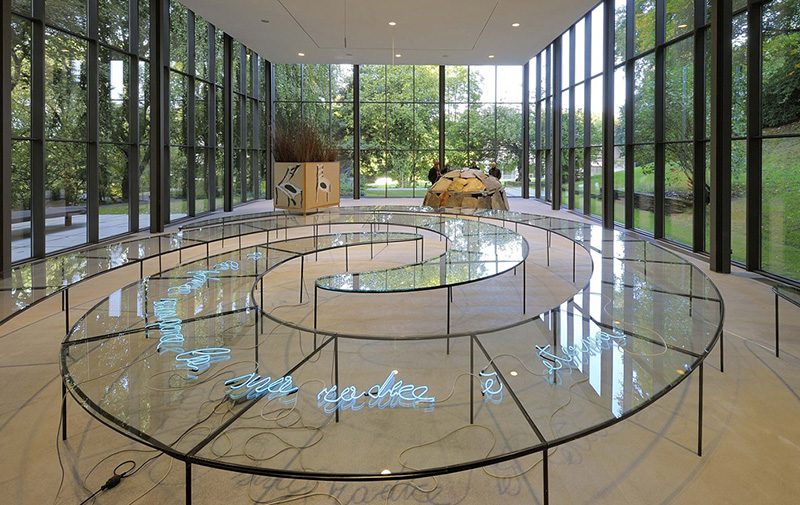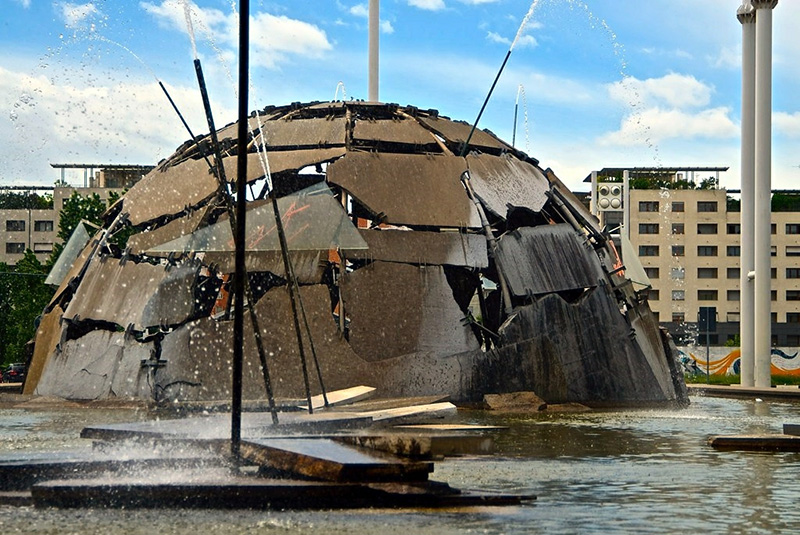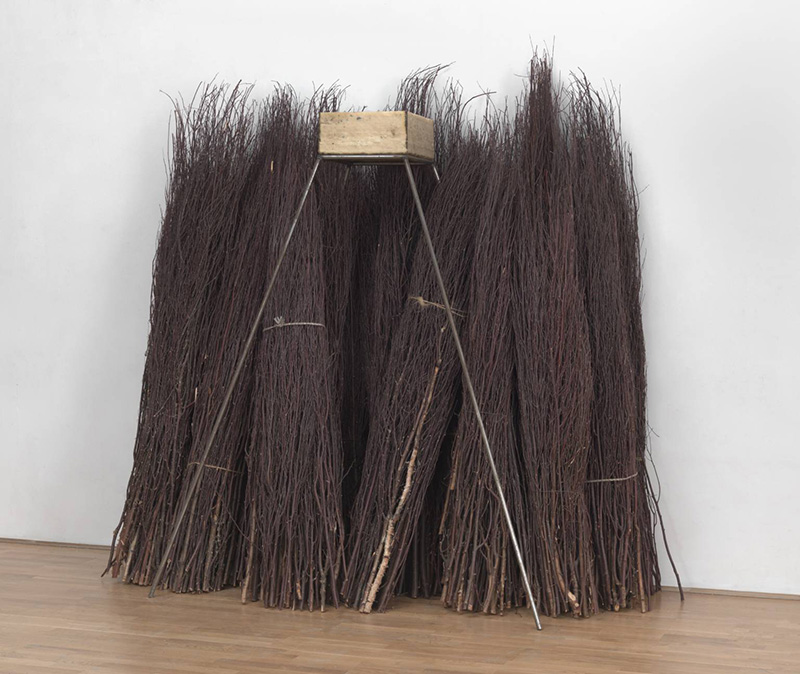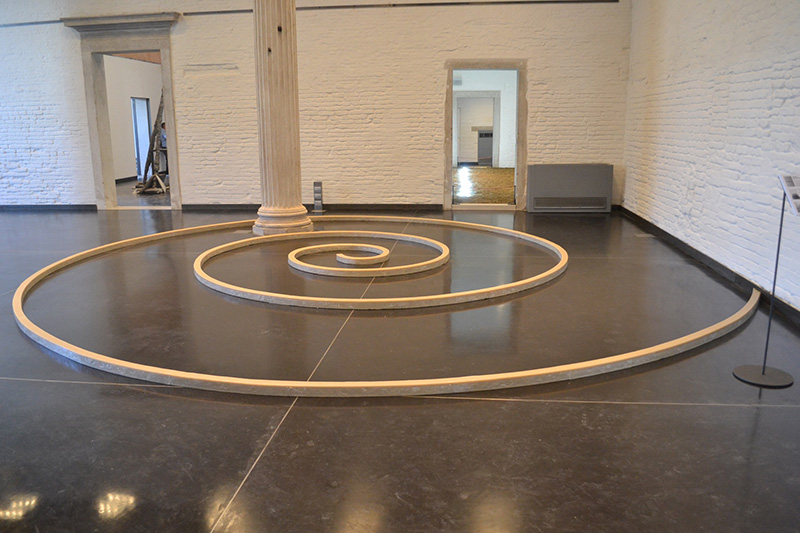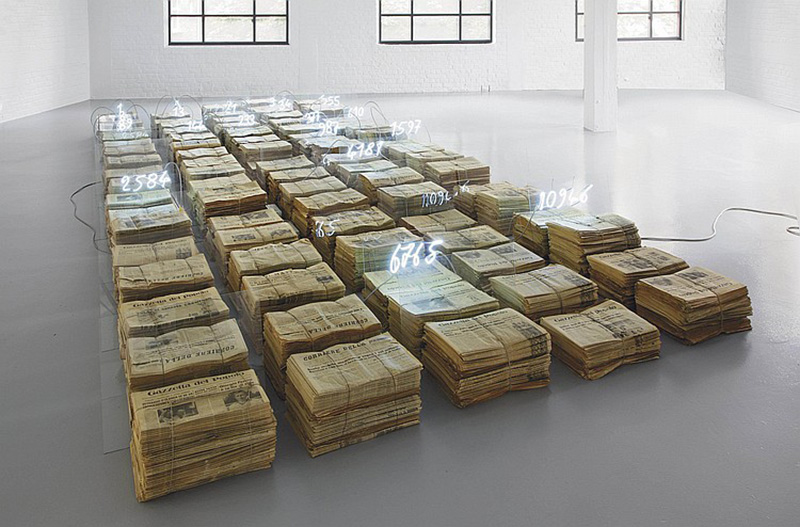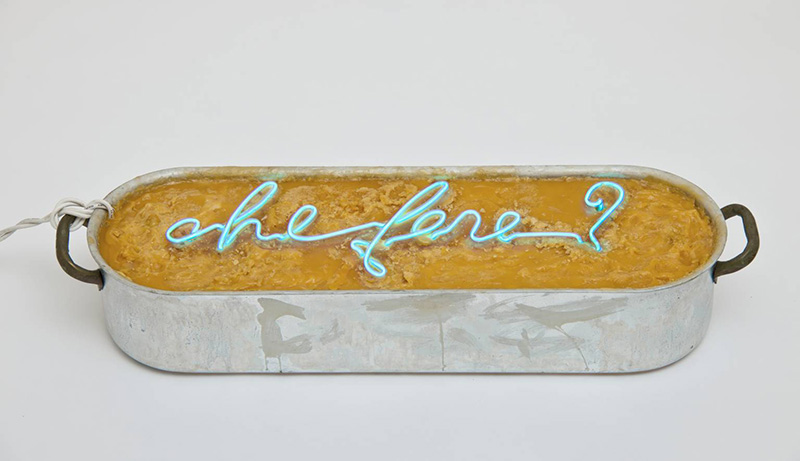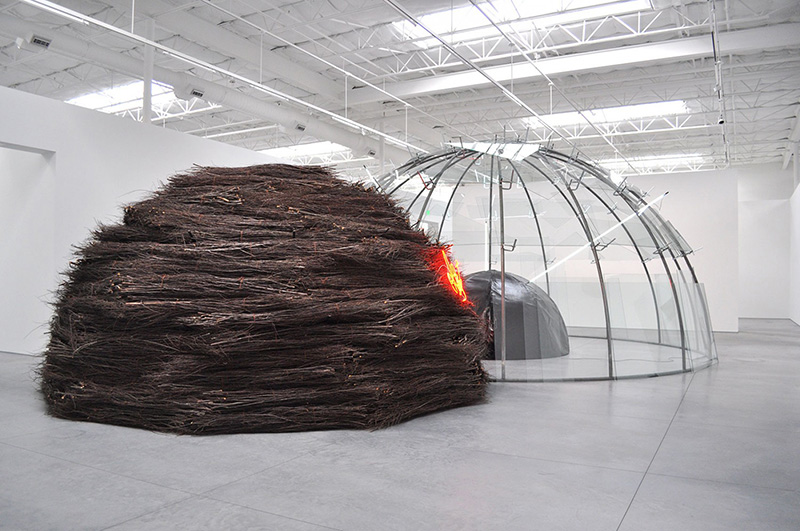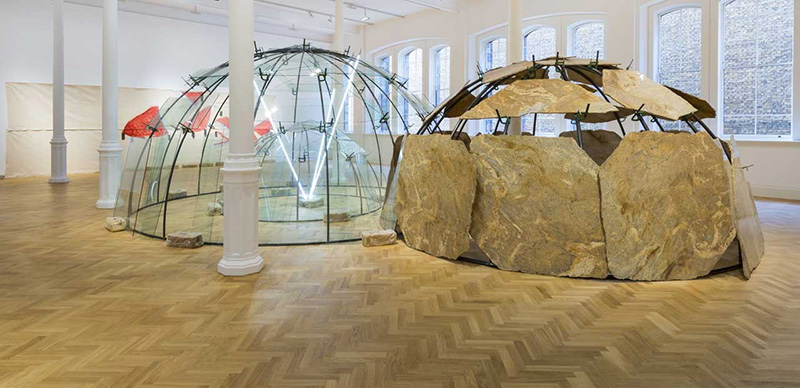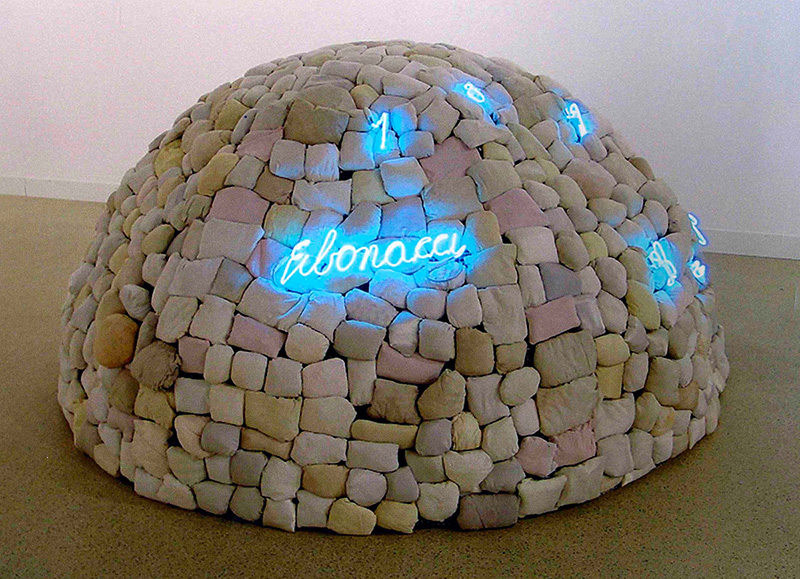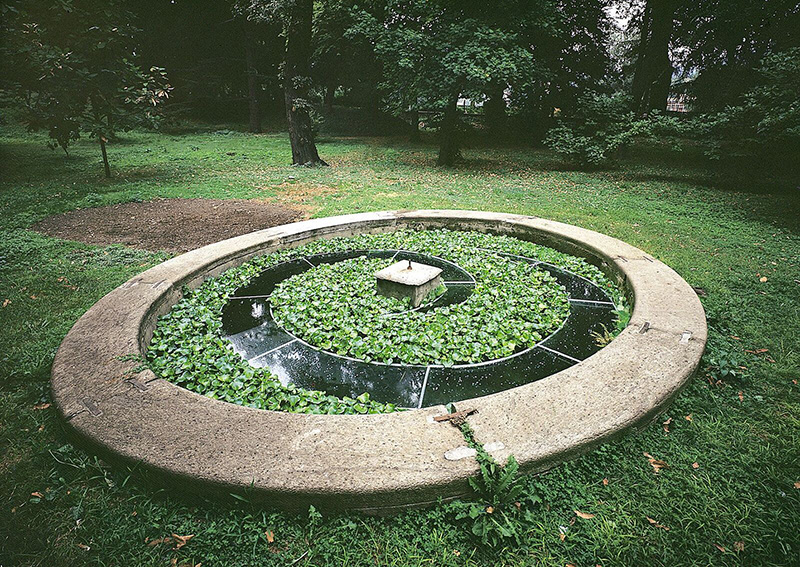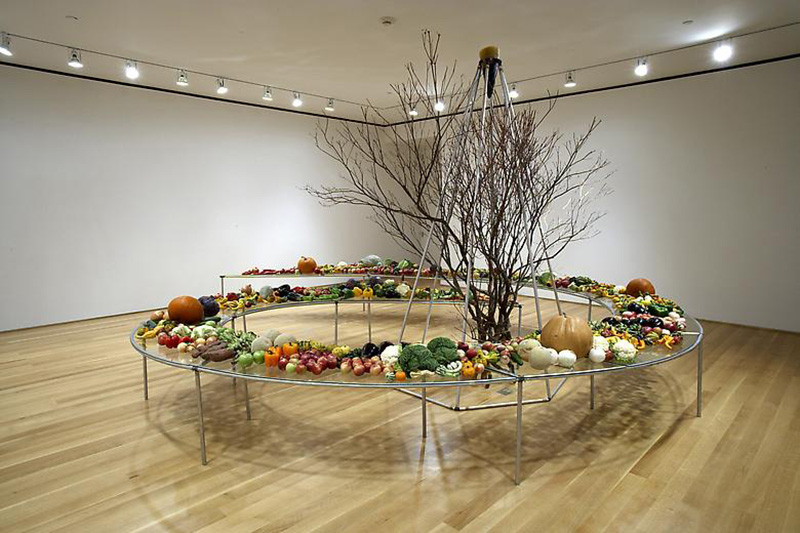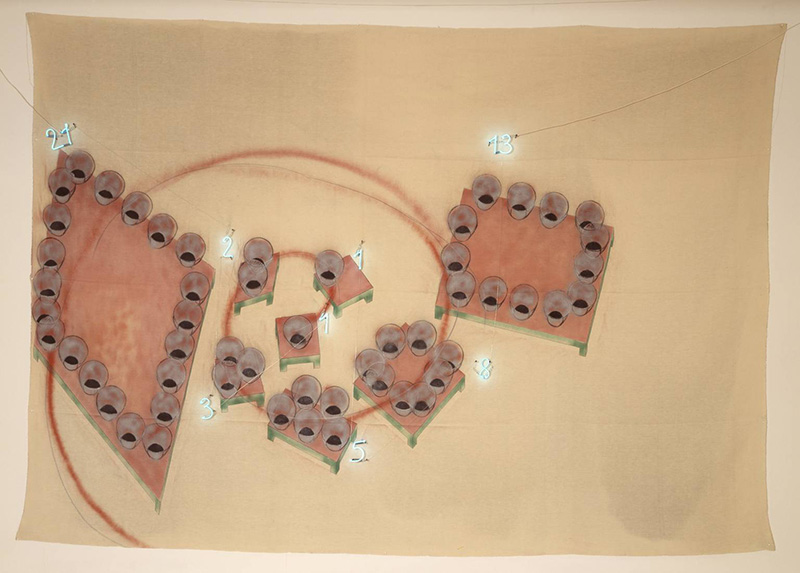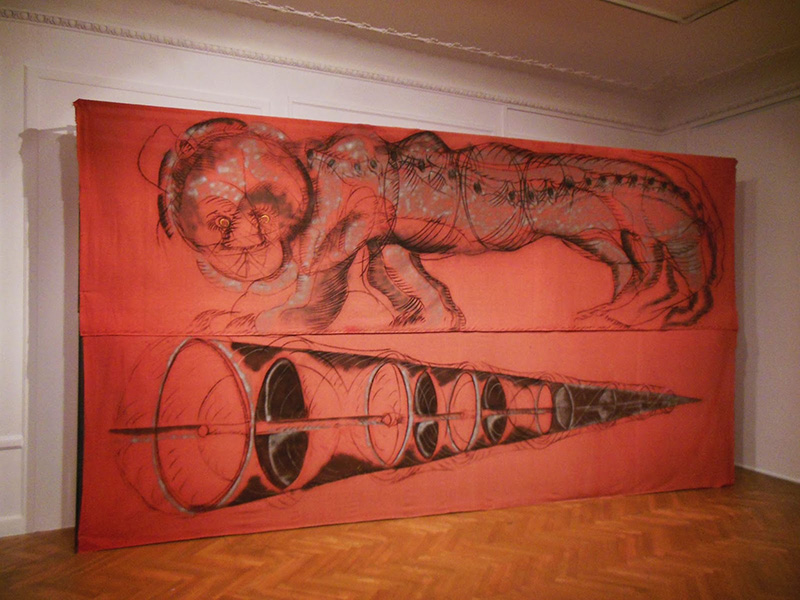TRACES: Mario Merz
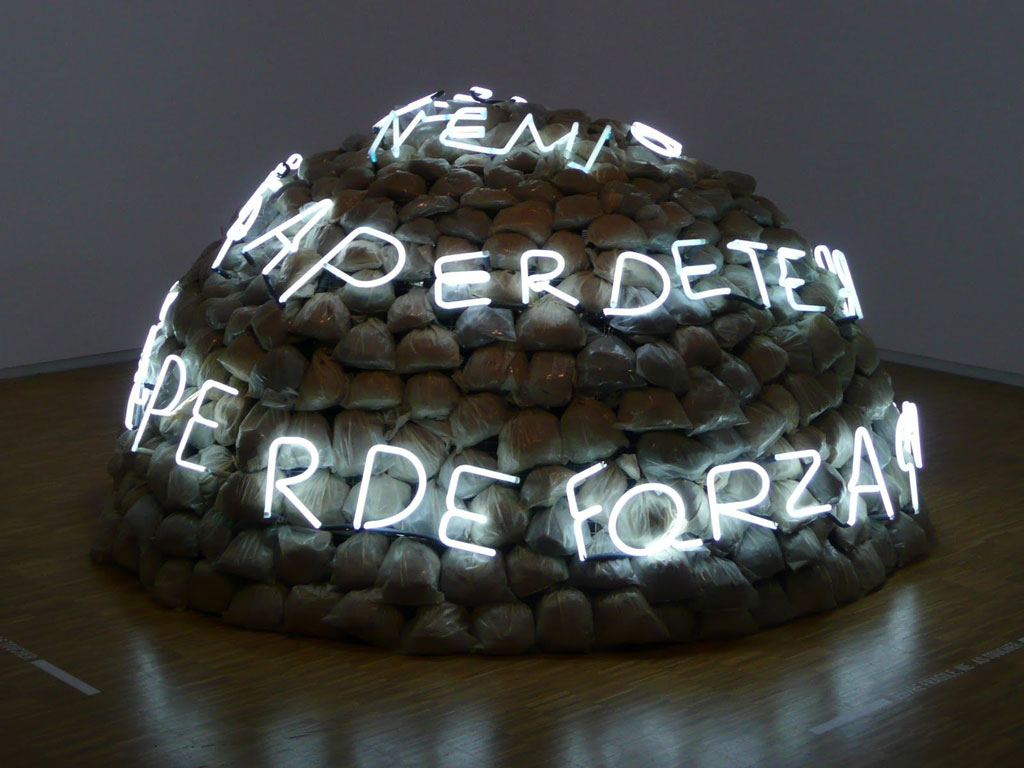 Today is the occasion to bear in mind a key member of Arte Povera, Mario Merz (1/1/1925-9/11/2003), who drew the guiding lines of a renewed existence for Italian art in a global context. This column is a tribute to artists, living or dead, who have left their mark in Contemporary Art. Through documents or interviews, starting with: moments and memories, we reveal out from the past-unknown sides of big personalities, who left their indelible traces in time and history…
Today is the occasion to bear in mind a key member of Arte Povera, Mario Merz (1/1/1925-9/11/2003), who drew the guiding lines of a renewed existence for Italian art in a global context. This column is a tribute to artists, living or dead, who have left their mark in Contemporary Art. Through documents or interviews, starting with: moments and memories, we reveal out from the past-unknown sides of big personalities, who left their indelible traces in time and history…
By Dimitris Lempesis
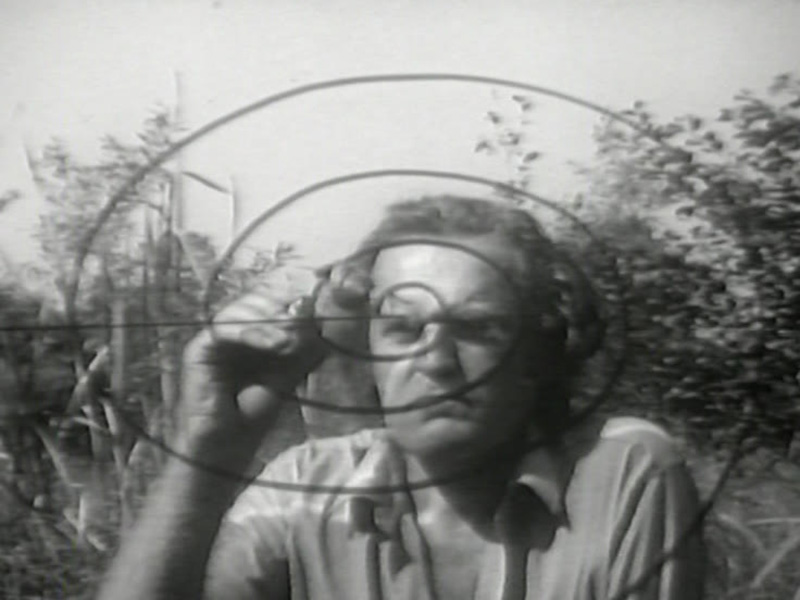 Mario Merz was born in Milan. He grew up in Turin and attended medical school for two years at the Università degli Studi di Torino. During World War II he joined the anti-Fascist group Giustizia e Libertà and was arrested in 1945 and confined to jail, where he drew incessantly on whatever material he could find. In 1950 encouraged by the critic, Luciano Pistoi, he began to paint with oil on canvas. His first solo exhibition, held at Galleria La Bussola, Turin, in 1954, included paintings whose organic imagery Merz considered representative of ecological systems. By 1966 he began to pierce canvases and objects, such as bottles, umbrellas, and raincoats with neon tubes, altering the materials by symbolically infusing them with energy. By the middle of the ‘60s, Merz’ research had developed and evolved towards an artistic experimentation that led him to produce canvas constructions enveloping objets trouvés, organic or industrial materials. In 1967 he embarked on an association with several artists, including Giovanni Anselmo, Alighiero Boetti, Luciano Fabro, Jannis Kounellis, Giulio Paolini, Giuseppe Penone, Michelangelo Pistoletto, and Gilberto Zorio, which became a loosely defined Art Movement labeled Arte Povera by critic and curator Germano Celant. This movement was marked by incorporating materials drawn from everyday life and the organic world in protest of the dehumanizing nature of industrialization and consumer capitalism. In 1968 Merz adopted one of his signature motifs, the igloo. It was constructed with a metal skeleton and covered with fragments of clay, wax, mud, glass, burlap, bundles of branches, and often political or literary phrases in neon tubing. In “Igloo di Giap” the first of his signature igloos, he bore a phrase inscribed in neon from the North Vietnamese military strategist General Vo Nguyen Giap: “Se il nemico si concentra perde terreno se il disperde perde forza” (“If the enemy masses his forces, he loses ground, if he scatters, he loses strength”). Merz’s igloos provide a focus for his preoccupation with the necessities of life – shelter, warmth, and food – though, as here, they also often contain neon tubes that suggest more sophisticated and modern experiences, such as those of advertising and consumption. Merz’s fascination with the Fibonacci sequence began in 1970. Devised by the medieval monk Leonardo da Pisa in the early 13th century, the mathematical formula followed the strikingly simple proposition that each number cited should equal the sum of the two numbers that preceded it, thus: 0, 1, 1, 2, 3, 5, 8… This numerical series was put to sociological and socialist purposes to photograph and document both factory workers in Naples and customers of the George IV pub in Kentish Town, north London, in his 1972 series “A Real Sum Is a Sum of People”. In 1972, Merz had also added stacked newspapers, archetypal animals, and motorcycles to his iconography, to be joined later by the table, symbolizing a locus of the human need for fulfillment and interaction. Merz often responds to the specific environment of his exhibitions by incorporating materials indigenous to the area as well as adjusting the scale of the work to the site. The majority of Merz’s oeuvre was comprised of three motifs – the igloo, the Fibonacci sequence and his use of neon. Critics who characterised this simplicity as a form of stasis missed the point. Merz was able to orchestrate ever-changing variations on a theme from these origins. As in the Fibonacci series, a simple formula offered an infinite number of possibilities. By 1977, and the emergence of the Transavanguardia in Italy, Merz also returned to painting, now embellishing his canvases with jewel-like neon numbers. Considerable importance was given to drawing which became the protagonist of a series of large installations. The 6/11/2002 saw the inauguration of the permanent installation, “Igloo fontana” in Turin.
Mario Merz was born in Milan. He grew up in Turin and attended medical school for two years at the Università degli Studi di Torino. During World War II he joined the anti-Fascist group Giustizia e Libertà and was arrested in 1945 and confined to jail, where he drew incessantly on whatever material he could find. In 1950 encouraged by the critic, Luciano Pistoi, he began to paint with oil on canvas. His first solo exhibition, held at Galleria La Bussola, Turin, in 1954, included paintings whose organic imagery Merz considered representative of ecological systems. By 1966 he began to pierce canvases and objects, such as bottles, umbrellas, and raincoats with neon tubes, altering the materials by symbolically infusing them with energy. By the middle of the ‘60s, Merz’ research had developed and evolved towards an artistic experimentation that led him to produce canvas constructions enveloping objets trouvés, organic or industrial materials. In 1967 he embarked on an association with several artists, including Giovanni Anselmo, Alighiero Boetti, Luciano Fabro, Jannis Kounellis, Giulio Paolini, Giuseppe Penone, Michelangelo Pistoletto, and Gilberto Zorio, which became a loosely defined Art Movement labeled Arte Povera by critic and curator Germano Celant. This movement was marked by incorporating materials drawn from everyday life and the organic world in protest of the dehumanizing nature of industrialization and consumer capitalism. In 1968 Merz adopted one of his signature motifs, the igloo. It was constructed with a metal skeleton and covered with fragments of clay, wax, mud, glass, burlap, bundles of branches, and often political or literary phrases in neon tubing. In “Igloo di Giap” the first of his signature igloos, he bore a phrase inscribed in neon from the North Vietnamese military strategist General Vo Nguyen Giap: “Se il nemico si concentra perde terreno se il disperde perde forza” (“If the enemy masses his forces, he loses ground, if he scatters, he loses strength”). Merz’s igloos provide a focus for his preoccupation with the necessities of life – shelter, warmth, and food – though, as here, they also often contain neon tubes that suggest more sophisticated and modern experiences, such as those of advertising and consumption. Merz’s fascination with the Fibonacci sequence began in 1970. Devised by the medieval monk Leonardo da Pisa in the early 13th century, the mathematical formula followed the strikingly simple proposition that each number cited should equal the sum of the two numbers that preceded it, thus: 0, 1, 1, 2, 3, 5, 8… This numerical series was put to sociological and socialist purposes to photograph and document both factory workers in Naples and customers of the George IV pub in Kentish Town, north London, in his 1972 series “A Real Sum Is a Sum of People”. In 1972, Merz had also added stacked newspapers, archetypal animals, and motorcycles to his iconography, to be joined later by the table, symbolizing a locus of the human need for fulfillment and interaction. Merz often responds to the specific environment of his exhibitions by incorporating materials indigenous to the area as well as adjusting the scale of the work to the site. The majority of Merz’s oeuvre was comprised of three motifs – the igloo, the Fibonacci sequence and his use of neon. Critics who characterised this simplicity as a form of stasis missed the point. Merz was able to orchestrate ever-changing variations on a theme from these origins. As in the Fibonacci series, a simple formula offered an infinite number of possibilities. By 1977, and the emergence of the Transavanguardia in Italy, Merz also returned to painting, now embellishing his canvases with jewel-like neon numbers. Considerable importance was given to drawing which became the protagonist of a series of large installations. The 6/11/2002 saw the inauguration of the permanent installation, “Igloo fontana” in Turin.